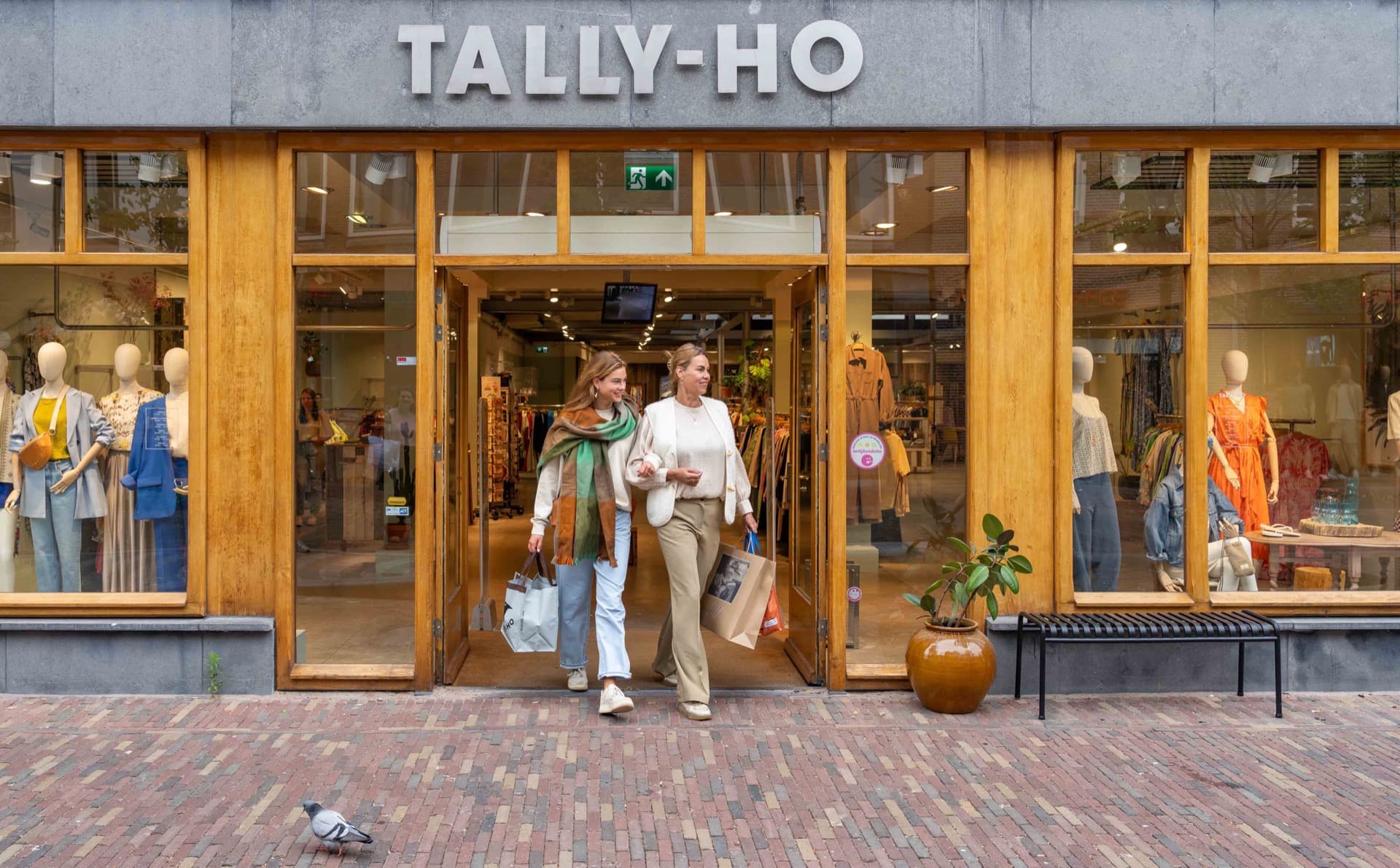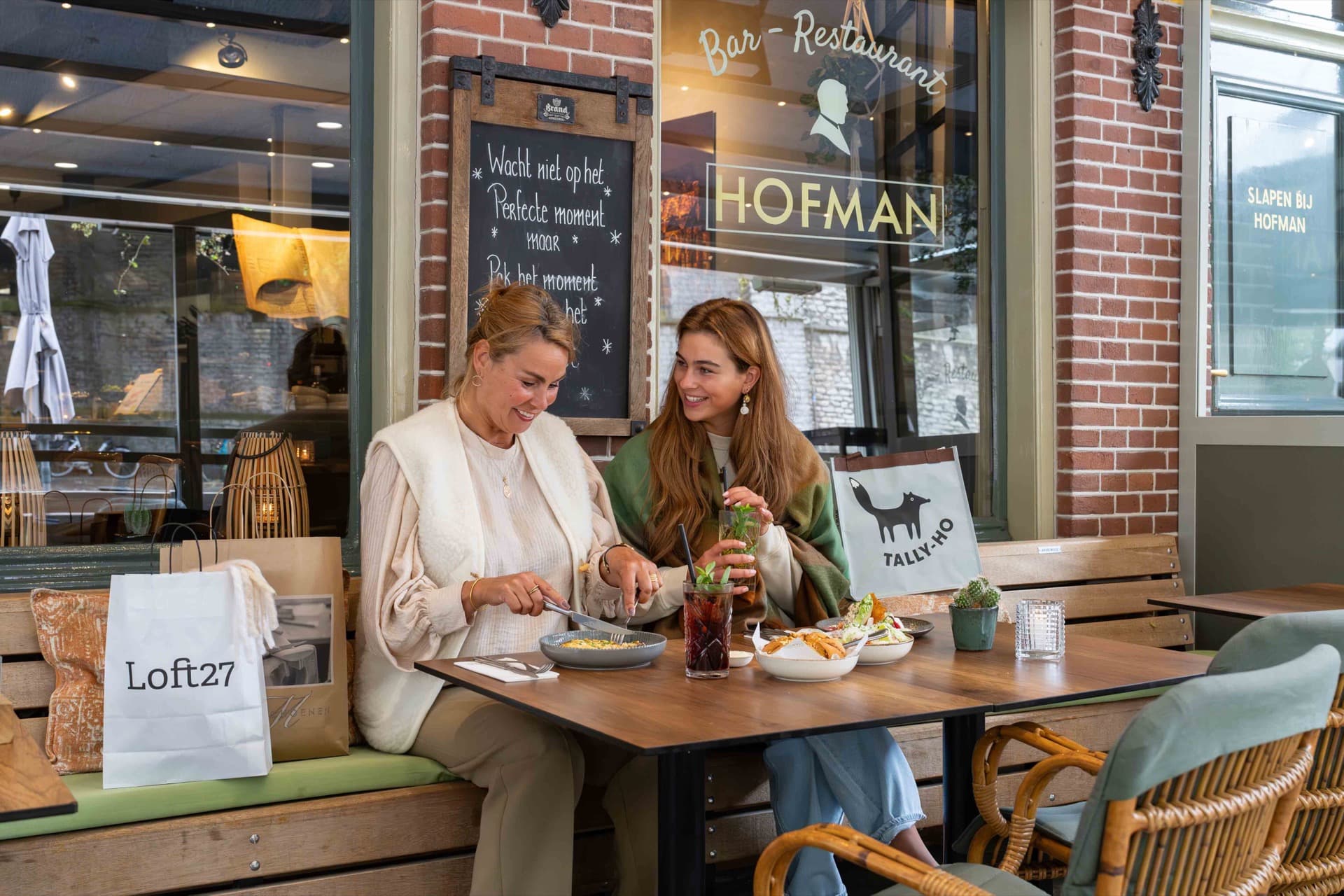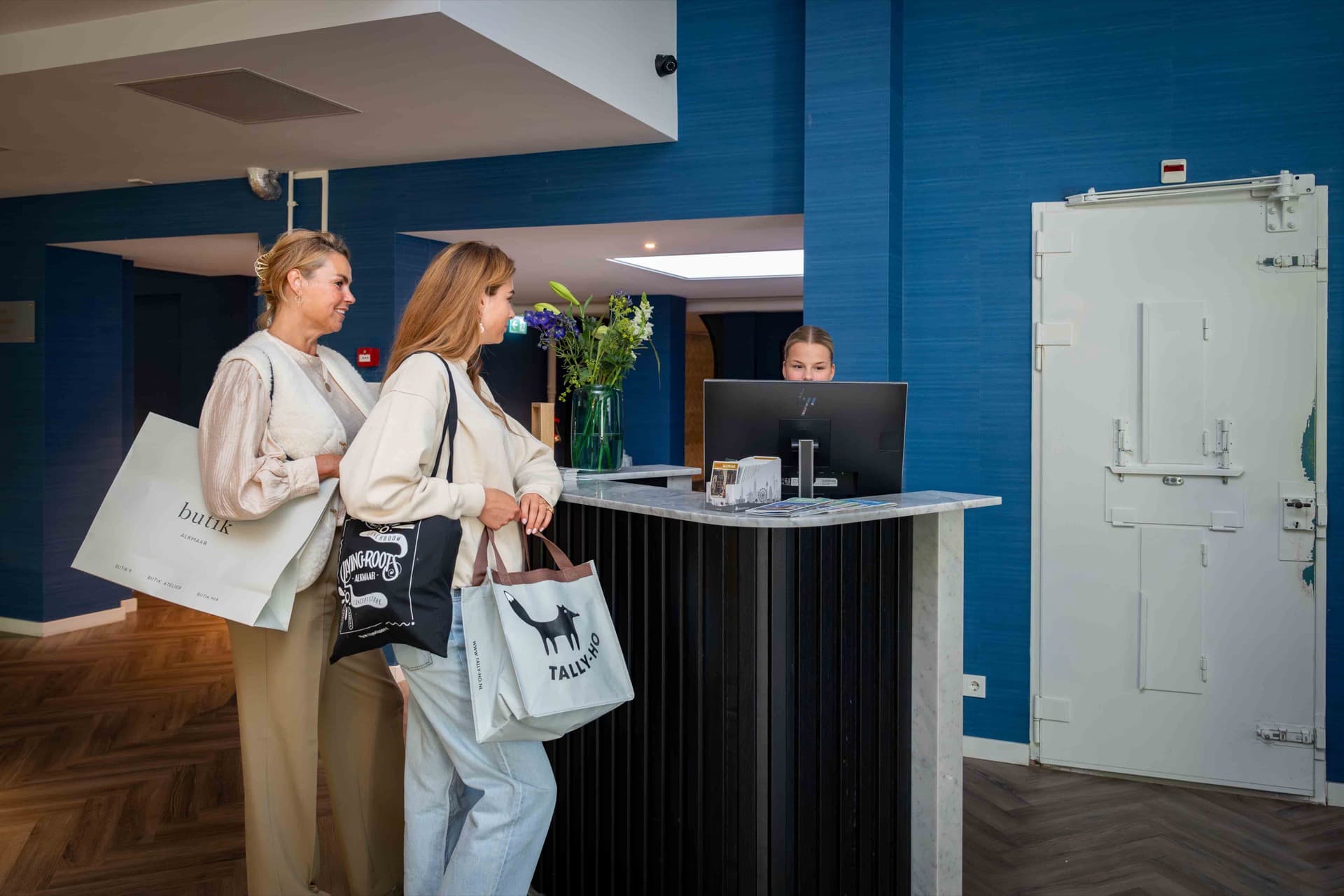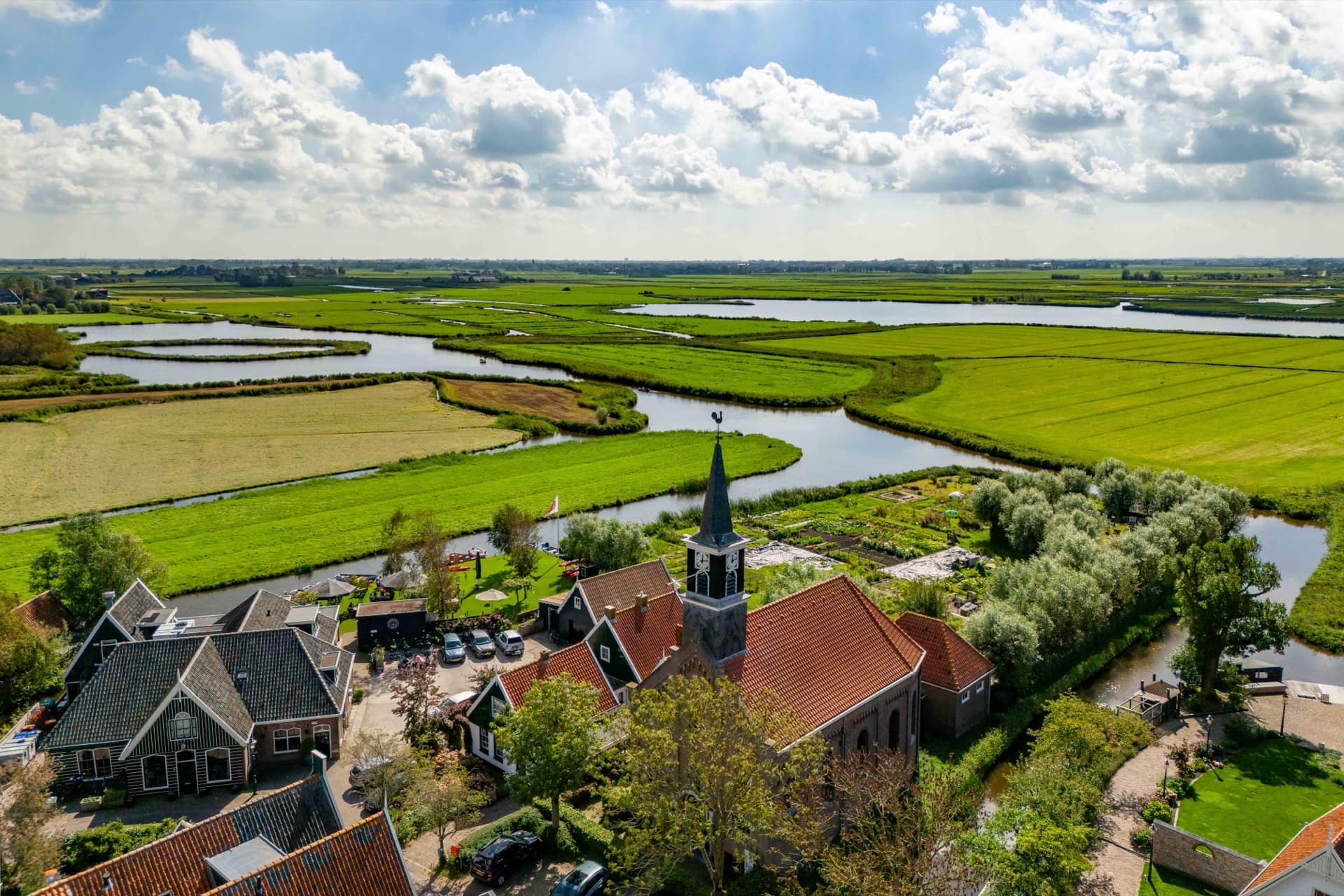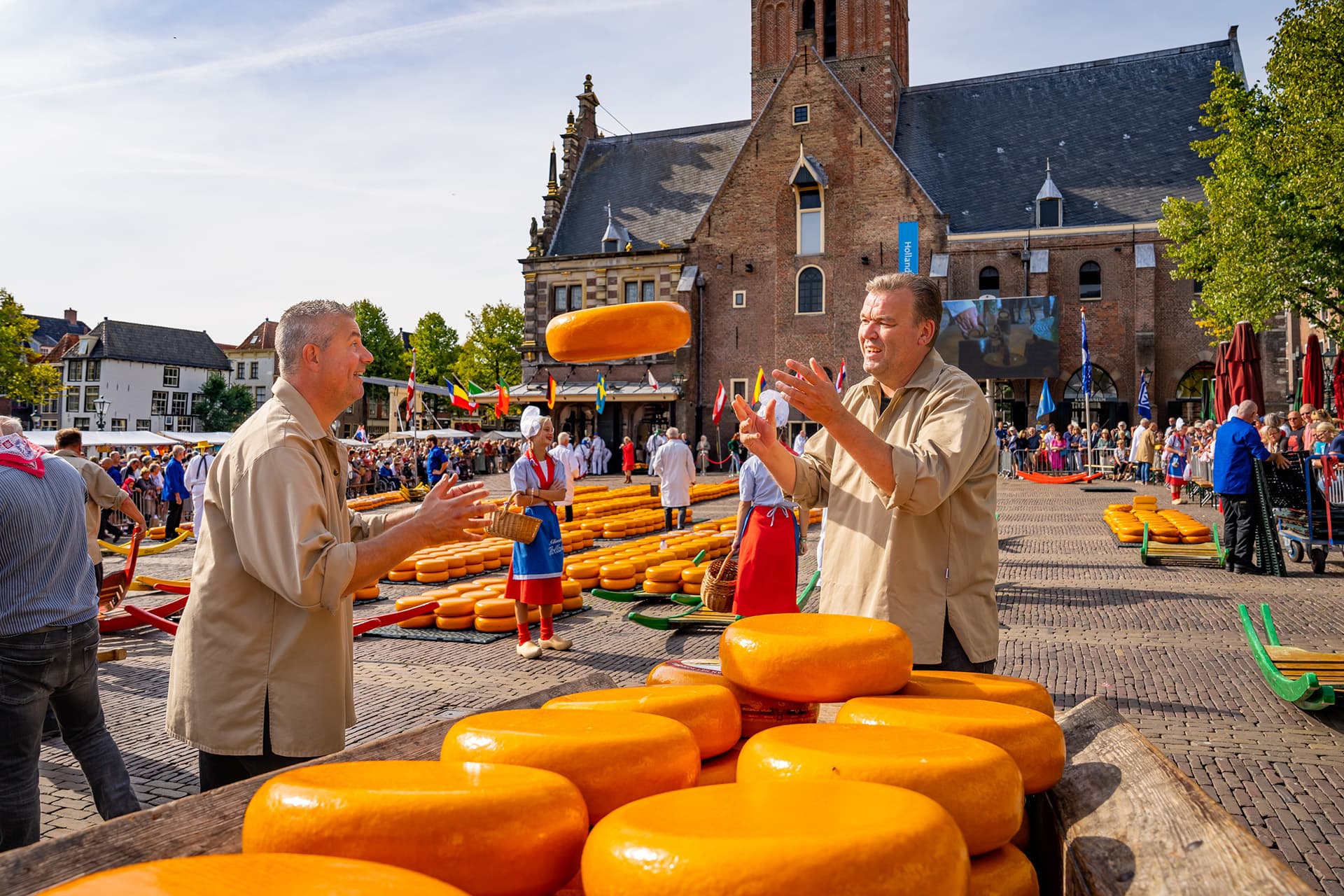
The Course of a Cheese Market
On this page, you will find detailed information about the traditional way in which the Alkmaar Cheese Market unfolds and all that it entails.
How does a Cheese Market work?
The Alkmaar Cheese Market is the oldest and largest in the Netherlands. Since 1365, Alkmaar has had one cheese scale, and by 1612, the city had as many as four cheese scales. Even the Waagplein, where the cheese market has been held since its inception, has been expanded several times. These facts highlight the significant importance of the cheese trade to Alkmaar.
Every year, you can witness the cheese market from the last Friday in March to the last Friday in September, every Friday from 10:00 am to 1:00 pm on the Waagplein. You can also visit the evening cheese market on Tuesday evenings in July and August from 7:00 pm to 9:00 pm.
7:00 am: Placing the Cheeses
Trucks loaded with cheeses drive onto Waagplein, where the Alkmaar Cheese Market has been held since its inception. Under the watchful eye of the market master, the 'setters' arrange as much as 30,000 kilos of Gouda and Edam cheeses in long rows on the still quiet Waagplein. That's about 2,400 cheeses! This must be completed by 9:30 am.
9:30 am: Cheese Carriers
The cheese carriers arrive at the Waaggebouw. Anyone who is late has to pay a fine, which partly goes to a school in the town of 'Alkmaar' in Suriname.
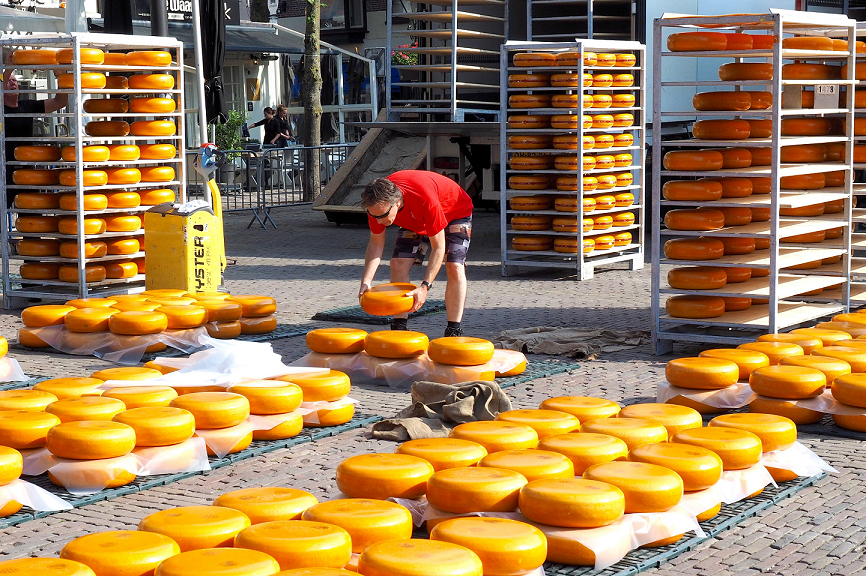
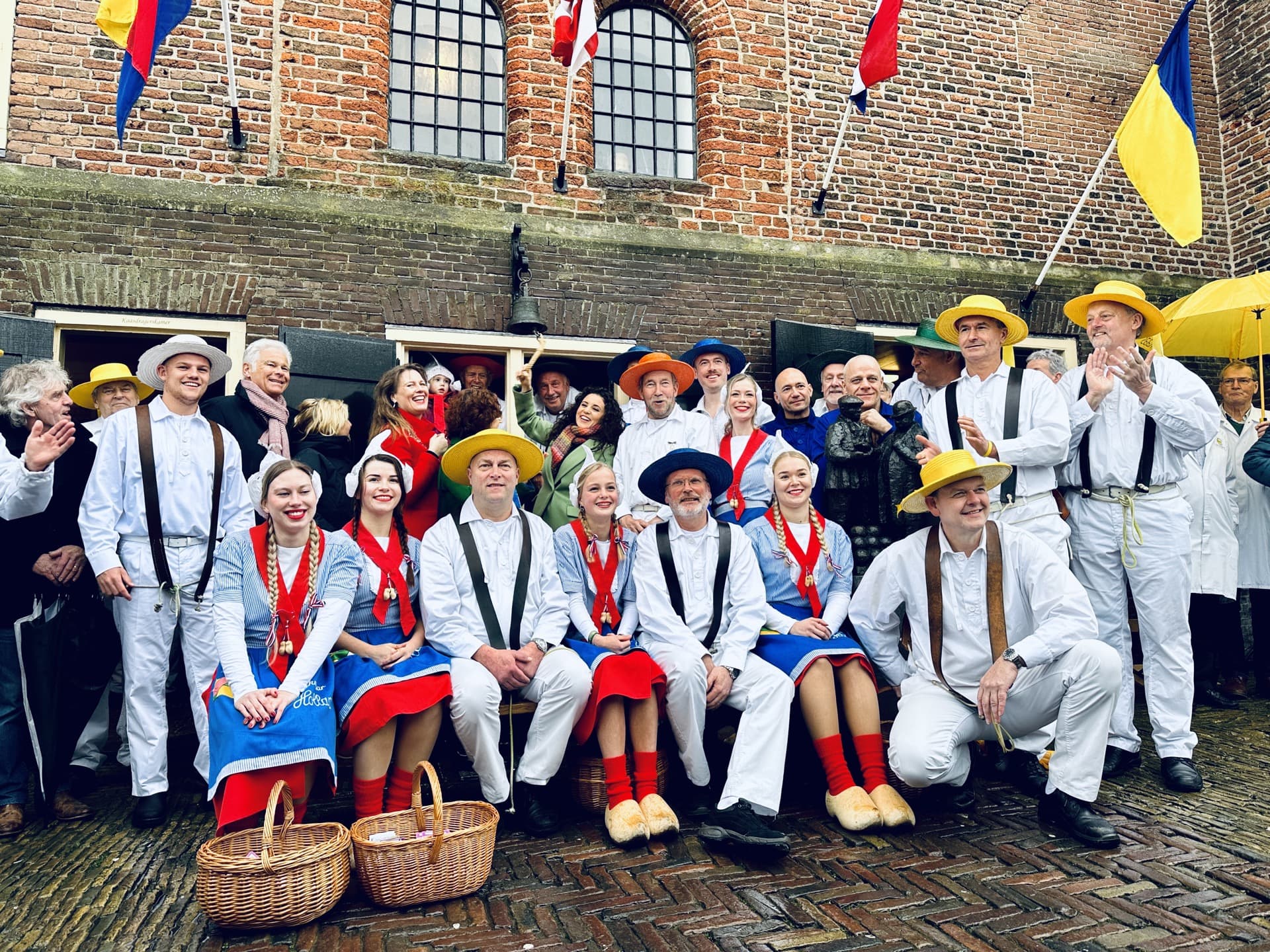
9:45 am: Cheese Father's Roll Call
The head of the cheese carriers, the 'cheese father,' holds his roll call with the cheese carriers in the Waaggebouw. Are all the cheese carriers present? Are there any special matters on the market today? Which cheese carriers will work in which part of the Cheese Market?
10:00 am: The Cheese Bell
At exactly 10:00 am, the cheese bell is rung. This opens the cheese market to visitors. The honor of ringing the bell usually goes to a well-known Dutch celebrity or a relation of the Municipality of Alkmaar.
From 10:00 am: Inspecting the Cheeses
After ringing the bell, the inspectors examine the cheeses by tapping, tasting, and feeling them. A piece is taken from the cheese with a special cheese bore. The smell and elasticity of the piece of cheese that comes out of it indicate something about the fat content. They also look at the number of holes in the cheese; these should be perfectly distributed over the cheese.
The Random Sample
Do you ever take a random sample? This term comes from the Cheese Market, where the inspectors use a cheese bore to take a piece from the cheese to taste it.
After a positive inspection, the intense negotiation of the cheese price can begin. This is still done through the traditional method of 'handjeklap,' which means 'hand-clapping.' The final handclap signifies the completion of the cheese sale.
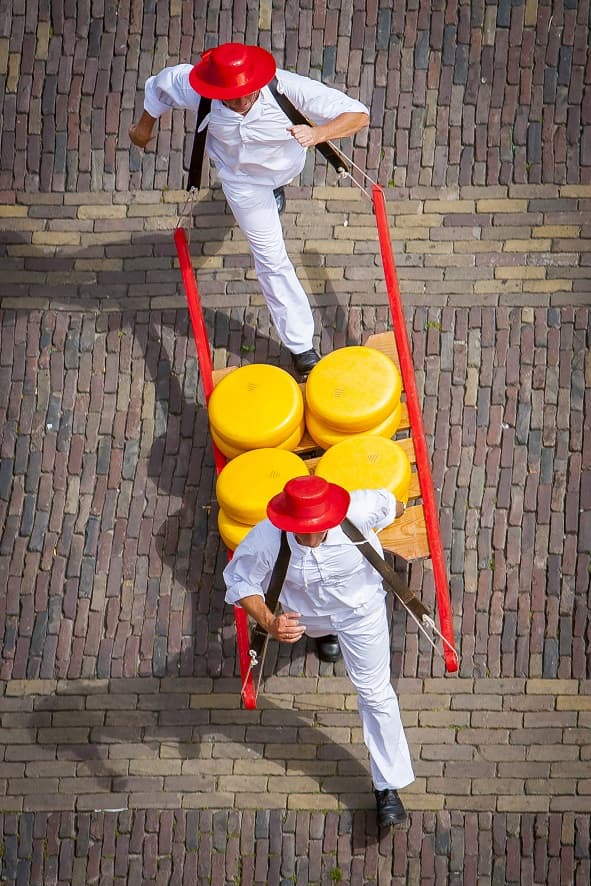
From 10:00 am: Weighing the Cheese
Once a batch of cheese is sold, the cheese carriers carry it on a berrie to the Weigh House. There, the cheese is weighed by the so-called 'tasman' (bagman). Where does the name tasman come from? It refers to the bag around his waist, where he keeps the collected money. The weighmaster ensures that the correct weight is billed to the buyer. After weighing, the tasman stamps the wooden berrie.
From 10:00 am: Carrying the Cheese Away
When a batch of cheese has been weighed and sold, the cheese carriers transport the cheeses across the market to the buyers' trucks. Two cheese carriers carry the cheese on a berrie, and more than 100 kilos of cheese are on it! It is quite an art to keep the cheese berrie steady while walking. The Cheese Carriers must walk in a certain rhythm, which is called the 'kaasdragersdribbel' or 'cheese carriers' trot.' This way, the berrie hangs still between the cheese carriers.
12:30 pm: Throwing the Cheese
The 'ingooiers' load the last cheeses onto carts and take them to the buyers' trucks in Marktstraat. The cheese disappears from Waagplein, and in its place, cozy terraces are set up. Maybe you've worked up an appetite for a cheese sandwich... The restaurants and cafes in and around Waagplein will be happy to help you! Read here for more information about dining in Alkmaar.

You might also like to read these articles:
